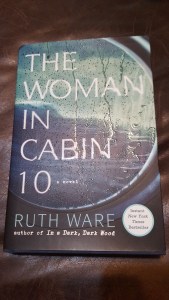Hidden Target Book Review
Recent news reminds me of the Cold War. One of the best writers of spy novels, Helen MacInnes wrote most of her books during the Cold War. The Hidden Target is my favorite Helen MacInnes novel. The book is both a spy novel and a love story. Some of my favorite books are re-read multiple times. This is one.
The Cold War made it easier to know who the bad guys were. Thus the suspense in The Hidden Target is not from an unknown predator or predators. Instead, the suspense builds around a time element. Will the good guys catch the bad guys before havoc ensues?
Hidden Target Plot
The plot is fairly straightforward. Russian agents infiltrate a group of college kids studying in Europe. They coax a small group into touring the world in a camper (think RV) starting from Europe. Of course an ulterior motive or two exist.
Nina O’Connell, the daughter of a high-ranking Washington D.C. politician is the target. Nina lost her mother to an early death and is adjusting to her father’s second wife. So, she is onboard with a summer of travel. In fact, she doesn’t even discuss the matter with him.
On the last afternoon before departure, Nina runs into Robert “Bob” Renwick. He is the hero of the story. Their last meeting occurred when Nina was only 15. A first love for her. Unrequited since he is much older than she. Naturally, Bob learns of the expedition.
Bob Renwick works for N.A.T.O. and is setting up an international organization to gather intelligence on terrorism. (Thus my tie in to current affairs.) The chance meeting bothers Bob because of the trip to explore the world. Even though he is busy establishing a new intelligence agency, he keeps digging into the oddities surrounding Nina’s travel plans. Naturally the two-story lines merge.
The Russian agents use familiar techniques to gain their objective. Most of the travelling students are gradually hooked on drugs and become easy to control. Sympathy is shown for encountered groups who use violence to make their point to the public. Anarchy is held in high regard. Even a divide and conquer approach can be found. Unfortunately I see some of the above techniques currently at work in our country.
I highly recommend reading The Hidden Target or any other Helen MacInnes book. The plots are as relevant today as they were during the Cold War when she wrote the stories. One only needs to look back at the 2016 election to understand the current dangers.


 If the weather cooperates, I hope to have this door completed in 3-4 days. The double door will take more time. I plan to have after pictures and a full report in a few weeks.
If the weather cooperates, I hope to have this door completed in 3-4 days. The double door will take more time. I plan to have after pictures and a full report in a few weeks.
 Fall is both officially and unofficially here. I still have some tomatoes and peppers producing well but signs of nature slowing down is evident in the number of plants starting to set seed. Time for collecting seed from the
Fall is both officially and unofficially here. I still have some tomatoes and peppers producing well but signs of nature slowing down is evident in the number of plants starting to set seed. Time for collecting seed from the 



 The official logo for National Preparedness Month 2017. [High Resolution JPG]
The official logo for National Preparedness Month 2017. [High Resolution JPG]





 Last year I planted purple potatoes for the first time. I love them and they are very nutritious. They thrived in the sandy soil. This year I decided to experiment with growing potatoes in a bag.
Last year I planted purple potatoes for the first time. I love them and they are very nutritious. They thrived in the sandy soil. This year I decided to experiment with growing potatoes in a bag.




















 PART 1
PART 1


 A Hawaiian Luau
A Hawaiian Luau

















 The Devil’s Triangle By Catherine Coulter and J.T. Ellison
The Devil’s Triangle By Catherine Coulter and J.T. Ellison

